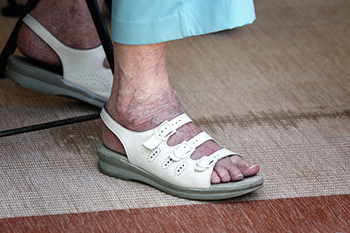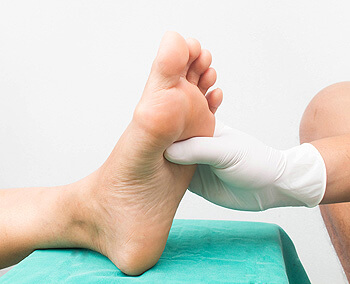
The foot is a complex structure comprised of numerous bones and joints, vital for movement and support. The forefoot includes the five metatarsal bones and the phalanges, which form the toes and are essential for balance and propulsion. The midfoot consists of the five tarsal bones, including the cuboid, navicular, and three cuneiform bones, which provide structural support and flexibility. The hindfoot comprises the talus and the calcaneus, with the talus connecting the foot to the leg and the calcaneus forming the heel. These bones work together through various joints, such as the subtalar joint and the metatarsophalangeal joints, allowing for a wide range of motion and shock absorption. If you have any kind of foot injury, it is suggested that you promptly schedule an appointment with a podiatrist who can diagnose and treat various foot injuries.
If you have any concerns about your feet, contact Scott Samera, DPM from Samera / Foot + Ankle. Our doctor can provide the care you need to keep you pain-free and on your feet.
Biomechanics in Podiatry
Podiatric biomechanics is a particular sector of specialty podiatry with licensed practitioners who are trained to diagnose and treat conditions affecting the foot, ankle and lower leg. Biomechanics deals with the forces that act against the body, causing an interference with the biological structures. It focuses on the movement of the ankle, the foot and the forces that interact with them.
A History of Biomechanics
- Biomechanics dates back to the BC era in Egypt where evidence of professional foot care has been recorded.
- In 1974, biomechanics gained a higher profile from the studies of Merton Root, who claimed that by changing or controlling the forces between the ankle and the foot, corrections or conditions could be implemented to gain strength and coordination in the area.
Modern technological improvements are based on past theories and therapeutic processes that provide a better understanding of podiatric concepts for biomechanics. Computers can provide accurate information about the forces and patterns of the feet and lower legs.
Understanding biomechanics of the feet can help improve and eliminate pain, stopping further stress to the foot.
If you have any questions please feel free to contact our office located in Lake City and Branford, FL . We offer the newest diagnostic and treatment technologies for all your foot and ankle needs.








